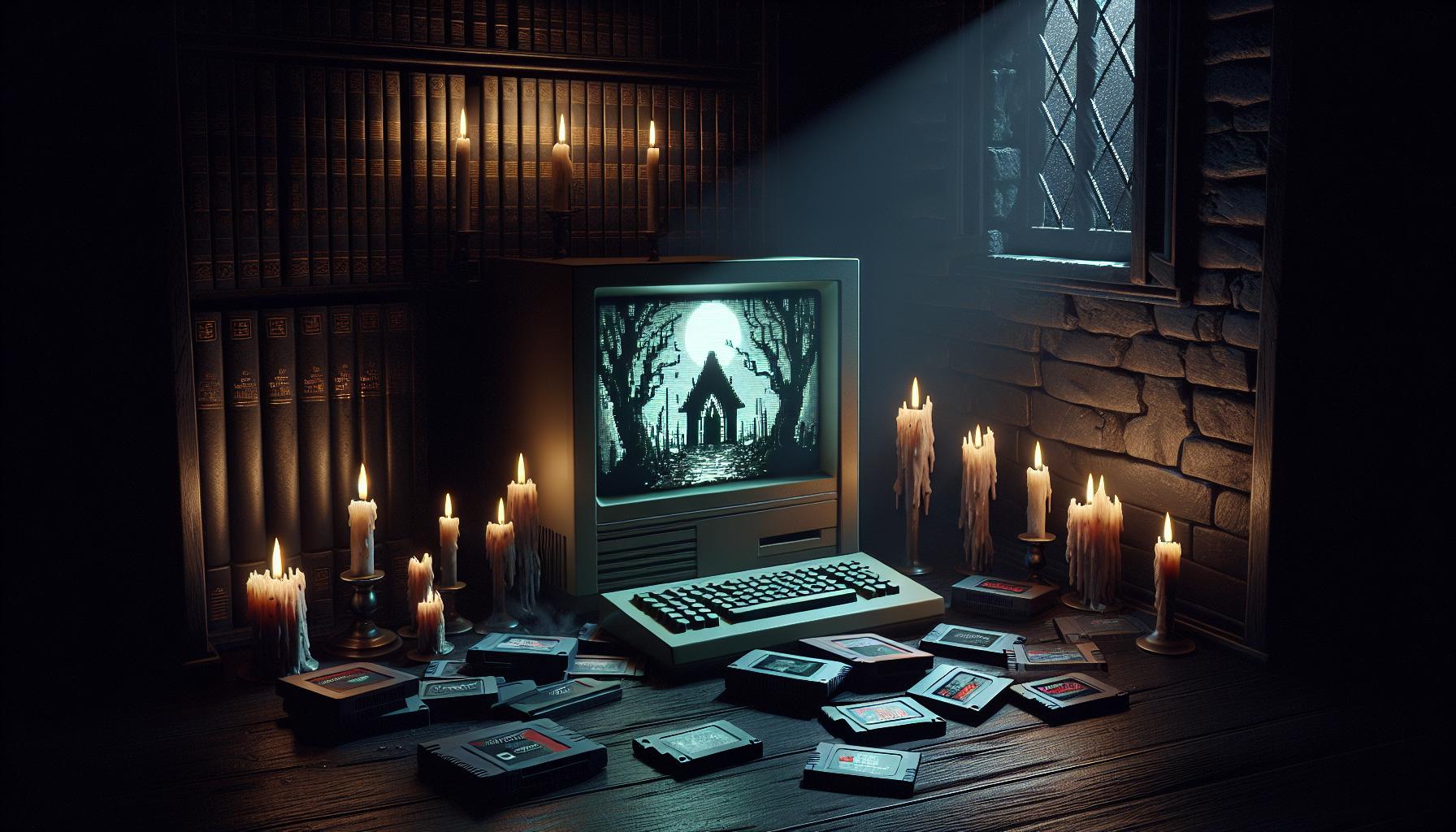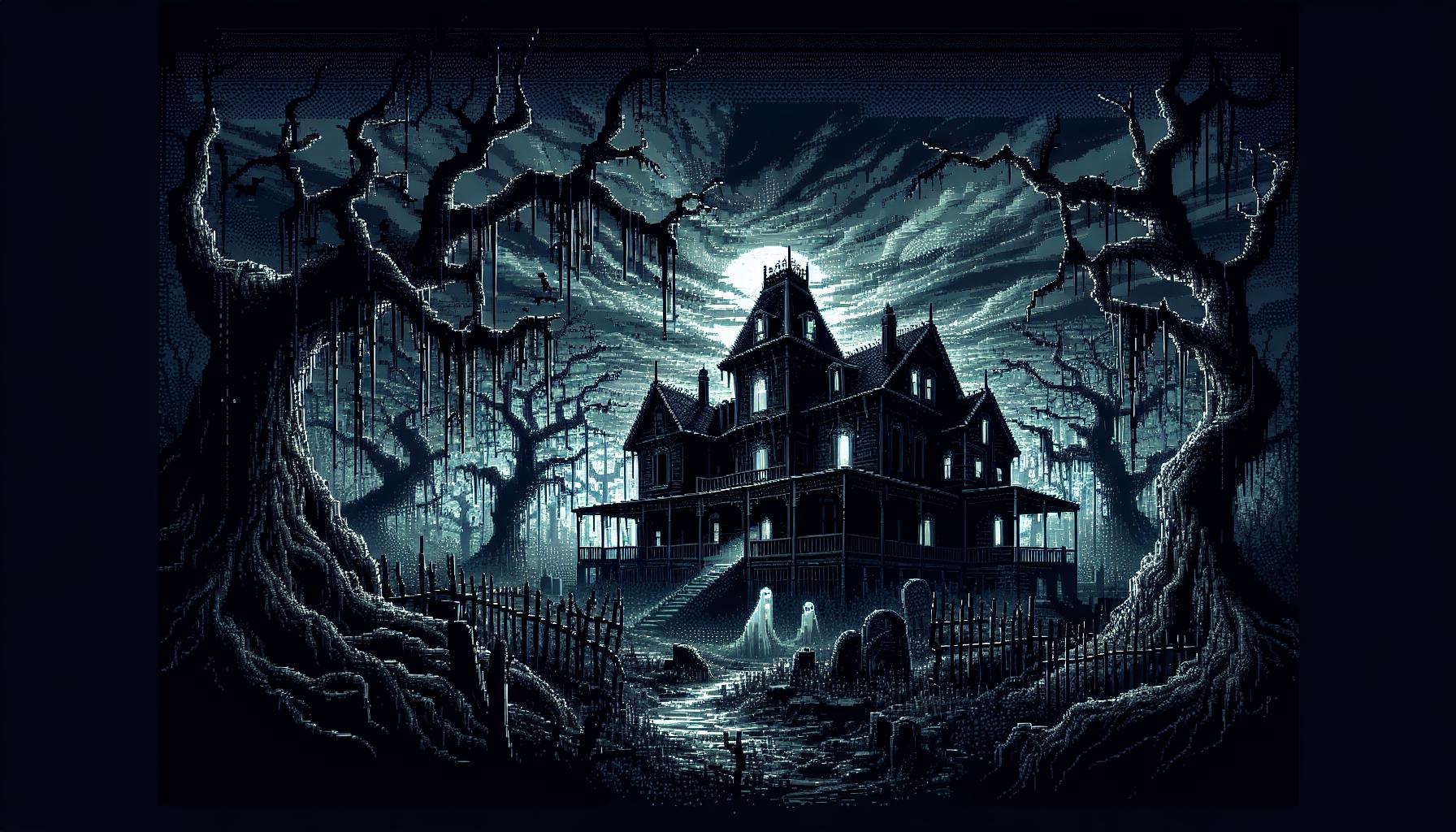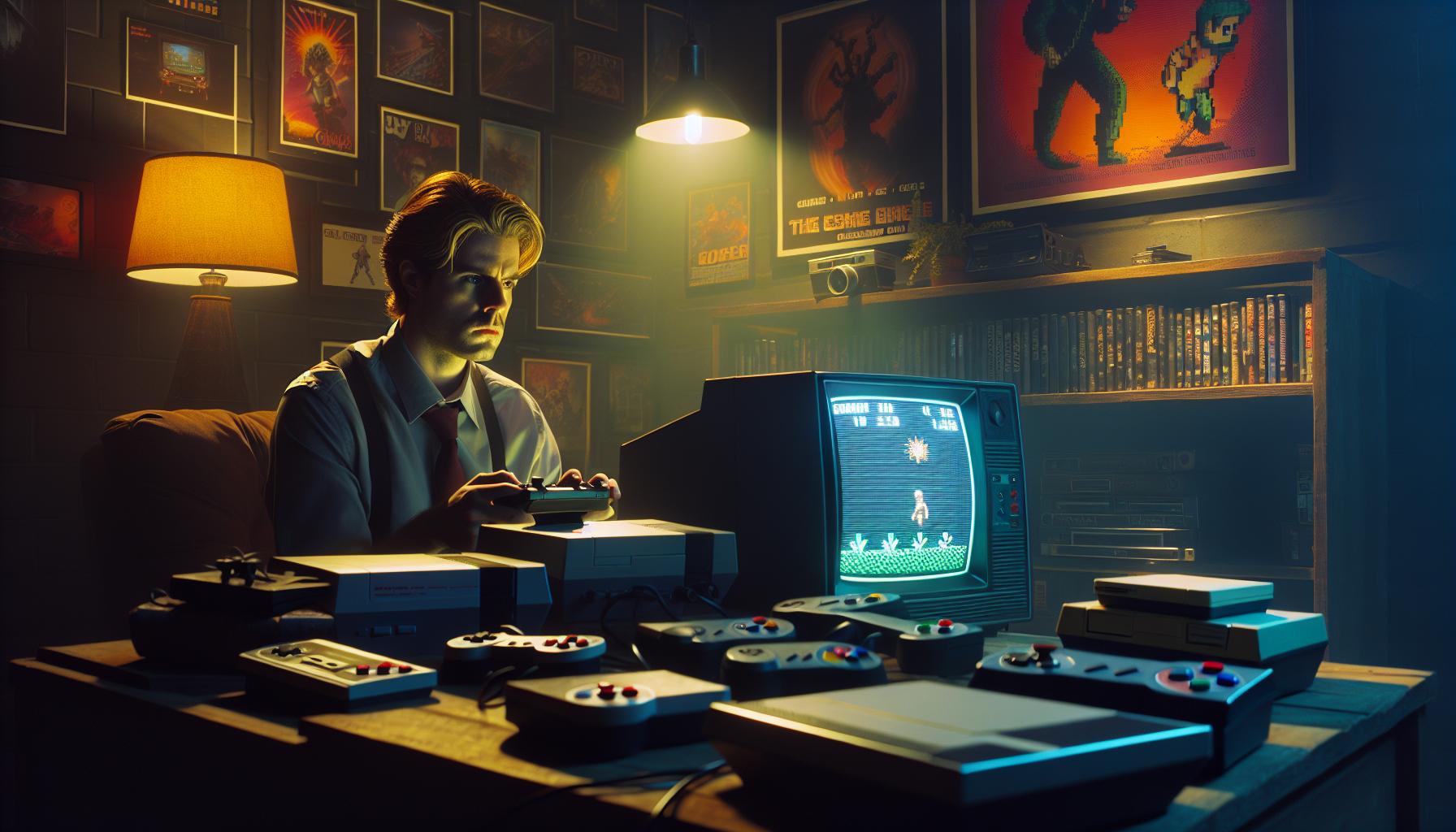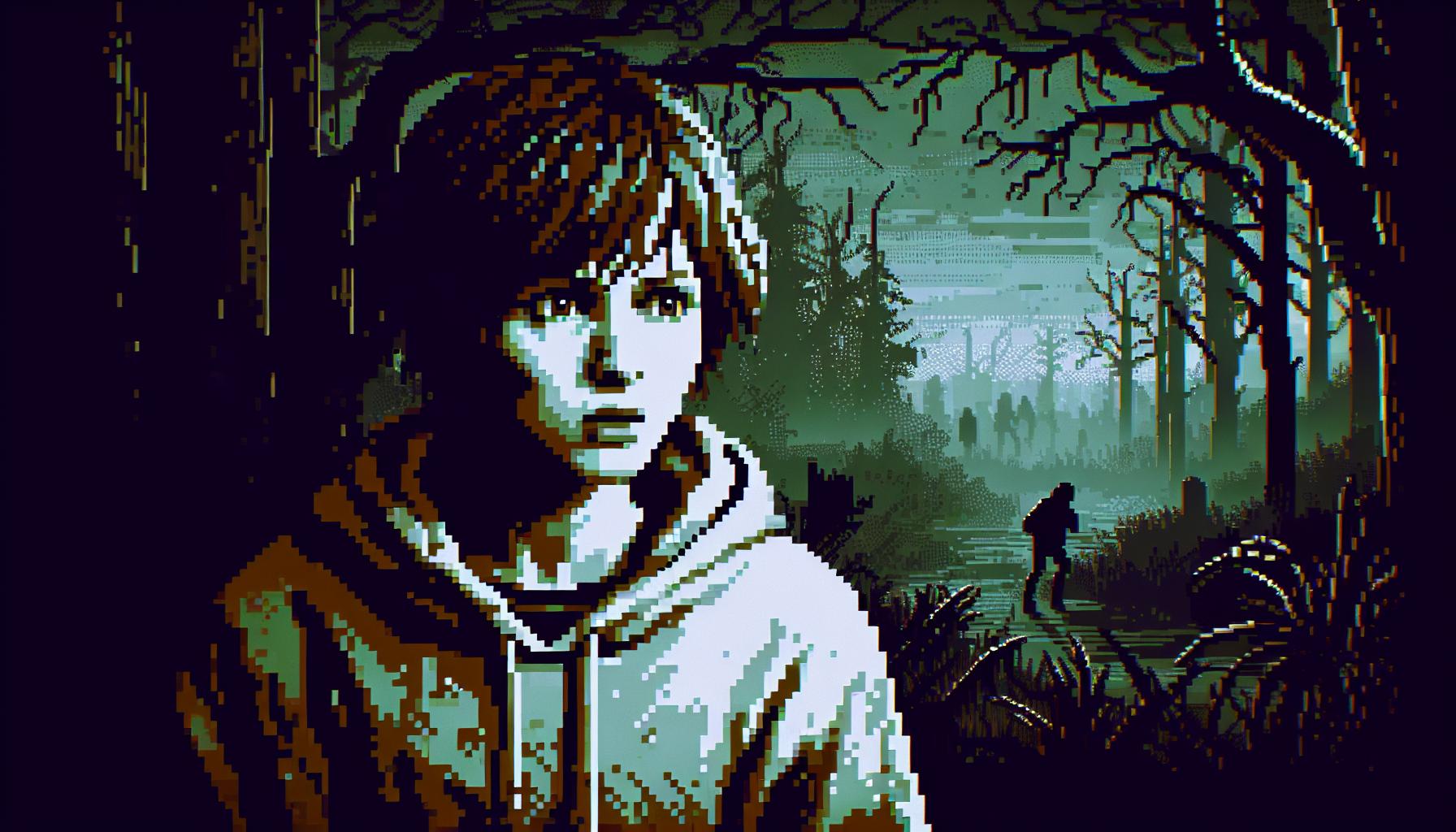Pixelated horror games have a unique charm that pulls me in every time. There’s something about those retro graphics that amplifies the eerie atmosphere, creating a sense of nostalgia mixed with dread. These games often rely on our imagination rather than high-end graphics, making every shadow and pixel feel more menacing.
As I dive into the world of pixelated horror, I find myself captivated by the storytelling and the clever use of sound design. Each game offers a different take on fear, from psychological thrills to outright jump scares. Whether it’s the simplicity of 8-bit visuals or the haunting melodies that linger long after I’ve played, pixelated horror games remind me that sometimes less really is more when it comes to creating a spine-chilling experience.
Key Takeaways
- Unique Aesthetic: Pixelated horror games utilize retro graphics and minimalism to enhance the eerie atmosphere, fostering a nostalgic yet terrifying experience for players.
- Imagination-Driven Experience: The blocky visuals and limited color palettes encourage players to use their imagination, transforming simple settings into deeply unsettling environments filled with hidden threats.
- Emphasis on Storytelling: These games often feature brief but impactful narratives that utilize symbolism and engage players emotionally, leaving a lasting impression beyond the gameplay.
- Effective Sound Design: Ambient sounds and haunting melodies heighten tension and create an immersive atmosphere, often serving as a catalyst for jump scares and psychological thrills.
- Diverse Fear Experiences: Pixelated horror games explore various types of fear, from psychological unease to shocking moments, appealing to a broad spectrum of horror enthusiasts.
- Cultural Impact: Titles like “Mad Father,” “Yomawari: Night Alone,” and “Lone Survivor” exemplify the genre’s influence on gaming culture, encouraging community discussions and inspiring new developers to explore pixel art.
Pixelated Horror Games
Pixelated horror games leverage retro graphics to build unsettling experiences. Their 8-bit visuals play a crucial role in crafting an eerie atmosphere that captivates players. The limited color palettes and blocky designs evoke nostalgia, enhancing the emotional impact of gameplay.
Imagination takes center stage in these games. Shadows appear ominous, and subtle movements in the background spark fear. Players fill in the gaps with their minds, transforming mundane settings into terrifying environments. These mechanics create a unique, immersive experience where anxiety thrives.
Storytelling in pixelated horror games emphasizes brevity and symbolism. Developers use minimalist narratives complemented by engaging sound design to intensify the atmosphere. The combination of chilling melodies and unsettling sound effects amplifies tension, keeping players on edge.
The variety of fear experiences these games provide ranges from psychological unease to sudden jump scares. Titles may create a slow-building dread or shock players with unpredictable moments. This versatility ensures a broad appeal to horror enthusiasts.
The simplicity of pixelated graphics fosters a deep connection with the game’s narrative. Players often find themselves reflecting on the story long after the gameplay ends. The impactful nature of these games fosters lasting impressions, reinforcing their place in the horror genre.
Key Characteristics of Pixelated Horror Games
Pixelated horror games possess distinct features that enhance their ability to evoke fear. These characteristics work together to create an unforgettable gaming experience.
Visual Aesthetic
Visual aesthetics in pixelated horror games leverage minimalism to amplify tension. Blocky designs and low-resolution graphics evoke a retro feel, immersing players in a nostalgic yet unsettling environment. Limited color palettes enhance emotions, often using stark contrasts to draw attention to critical elements. This simplicity allows for the effective use of shadows, which obscures details and encourages players to fill in the gaps with their imaginations. For instance, a dark corner may harbor unseen threats, making every pause in gameplay a moment of suspense.
Atmosphere and Sound Design
Atmosphere plays a crucial role in pixelated horror games, with sound design enhancing the overall experience. Ambient sounds, such as eerie music and unsettling effects, create a sense of dread. Every creak and whisper builds tension, often leading to unexpected jump scares. The storytelling, combined with sound, reinforces the emotional impact of the game. For instance, using haunting melodies alongside visual cues can turn routine gameplay into a nerve-wracking experience. This synergy between sounds and visuals creates an immersive world that lingers with players long after they exit the game.
Notable Pixelated Horror Games
Pixelated horror games stand out not just for their graphics but for their compelling narratives and emotional depth. Below are some notable titles that exemplify the genre.
Game 1: Mad Father
Mad Father immerses players in a chilling narrative about a young girl named Aya Drevis, who uncovers dark secrets within her family’s mansion. Players navigate through eerie environments filled with puzzles and sinister creatures. The retro aesthetics amplify the horror, making every shadow feel threatening. The game’s gripping storyline, coupled with its unique dual gameplay mechanics, provides a haunting experience that stays with players long after they finish.
Game 2: Yomawari: Night Alone
Yomawari: Night Alone tells the tale of a young girl searching for her missing sister in a surreal and unsettling world. Set in a small town shrouded in darkness, the pixelated visuals enhance the game’s atmosphere, making familiar surroundings seem menacing. Players must evade horrifying spirits while solving puzzles and exploring the environment. The haunting soundtrack and minimalistic art create a profound sense of dread, ensuring that every step feels perilous.
Game 3: Lone Survivor
Lone Survivor dives into the psyche of its protagonist, in a post-apocalyptic world filled with nightmarish creatures. Players experience a blend of survival horror mechanics and psychological elements, navigating through pixelated landscapes that evoke intense feelings of isolation. The game’s limited color palette contributes to its surreal vibe, while its intricate storytelling and sound design enhance the overall fear. Choices made during gameplay can lead to multiple endings, adding layers to the narrative and ensuring replayability for horror fans.
The Impact of Pixelated Horror Games on Gaming Culture
Pixelated horror games significantly influence gaming culture by blending nostalgia with innovative storytelling. They revitalize interest in retro aesthetics while providing fresh narratives and emotional experiences. This unique combination encourages new developers to explore pixel art, influencing both indie and mainstream titles.
Pixelated visuals affect players on multiple levels. The blocky designs and limited color palettes evoke memories of earlier gaming, fostering a deeper connection to the past. These graphics challenge players to engage their imaginations, filling in the visual gaps and creating personalized horrors. This dynamic interaction enhances the overall gaming experience.
The storytelling in pixelated horror games stands out due to its brevity and symbolism. Developers focus on impactful narratives that resonate with players. Short, yet potent, narratives often serve as a commentary on fear, isolation, and psychological tension. This depth of storytelling contributes to the genre’s appeal, attracting diverse audiences.
Sound design in pixelated horror plays a crucial role in shaping the atmospheric experience. Ambient sounds and unsettling melodies work together to amplify tension. This synergy between sound and visuals creates an immersive environment, leaving players feeling the weight of horror long after gameplay.
Moreover, pixelated horror games encourage community discussions and analysis. Players often share experiences, theories, and interpretations online, fostering a vibrant culture around these titles. These conversations enrich the gaming community and sustain interest in the genre.
Noteworthy titles, such as “Mad Father,” “Yomawari: Night Alone,” and “Lone Survivor,” exemplify the genre’s cultural impact. Each game offers unique storytelling and emotional engagement, reinforcing pixelated horror’s significance in gaming culture. As developers continue to experiment with pixelated aesthetics, the genre’s influence on players and the broader gaming landscape remains undeniable.
Gaming Landscape
Pixelated horror games have carved out a unique niche in the gaming landscape. Their retro aesthetics and reliance on imagination create an atmosphere that’s both haunting and nostalgic. I appreciate how these games challenge us to confront our fears while engaging with compelling narratives.
The synergy of minimalist visuals and atmospheric sound design leaves a lasting impression. Each experience invites players to explore deeper emotional themes, making the journey memorable long after the game ends. As new developers embrace this style, I’m excited to see how pixelated horror continues to evolve and influence the genre.

